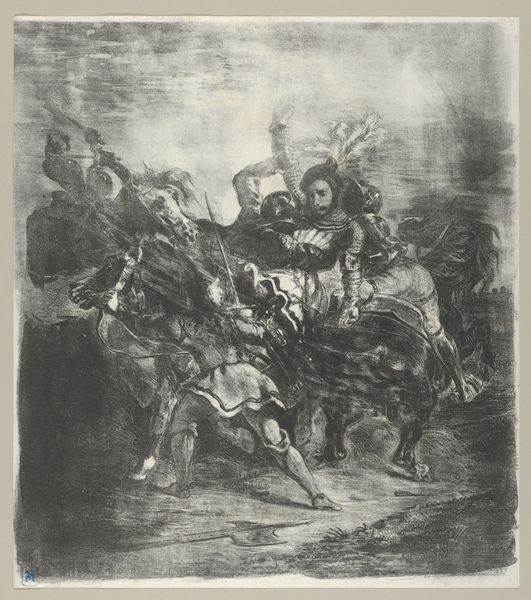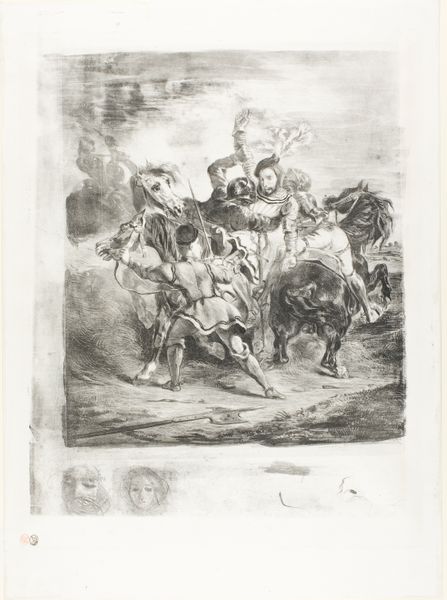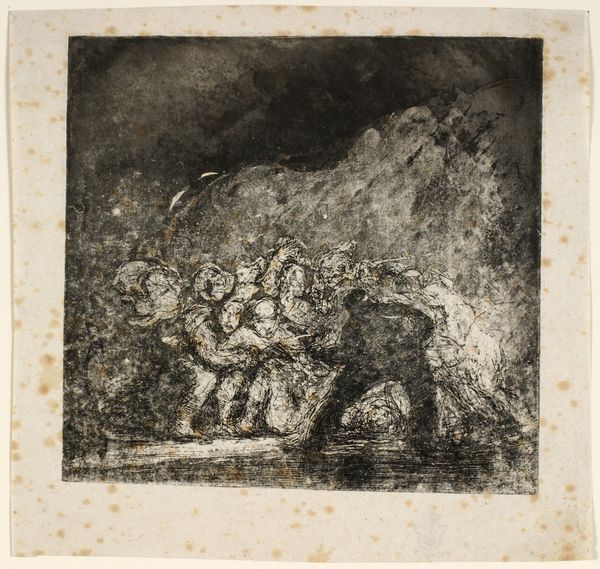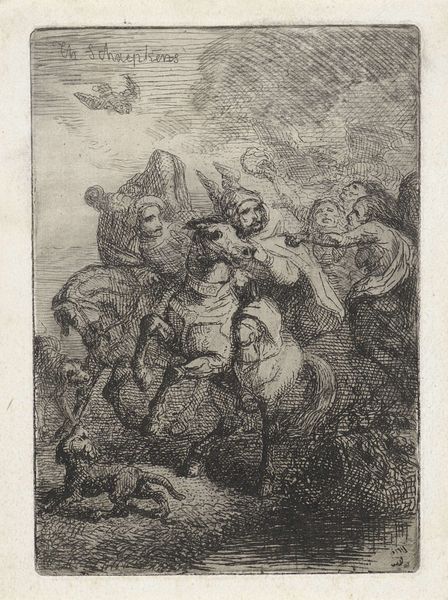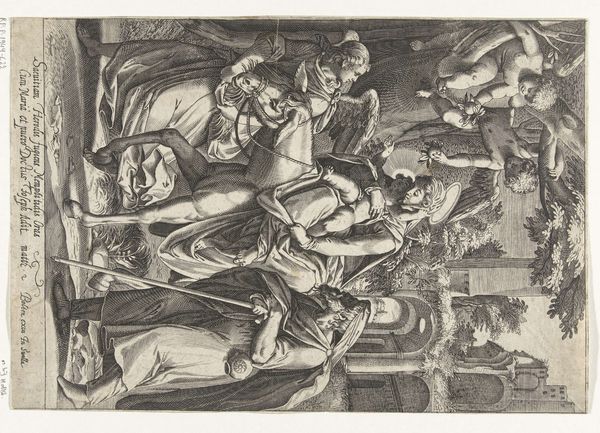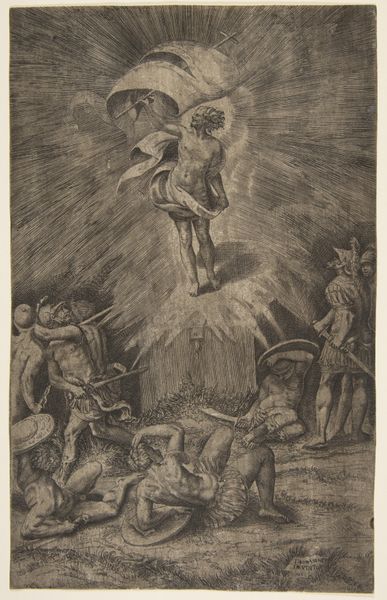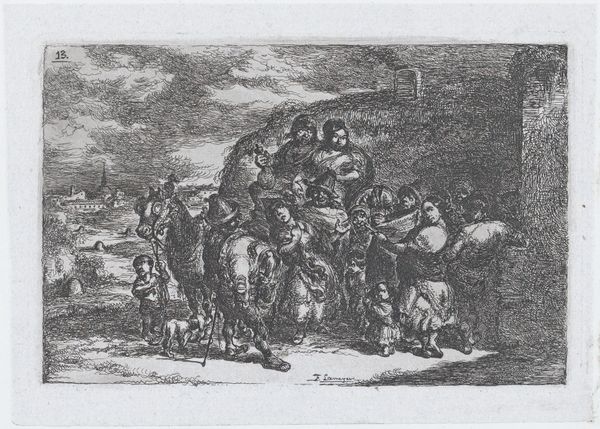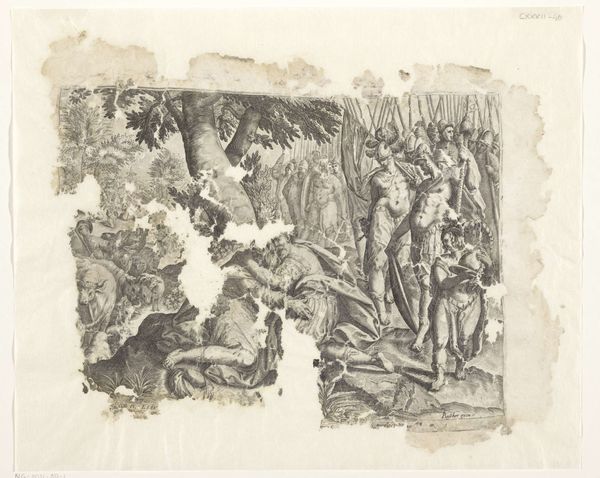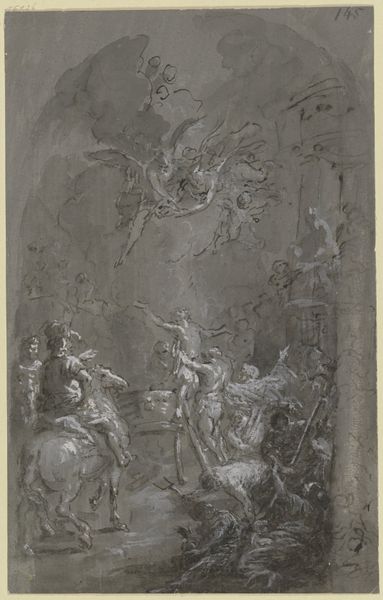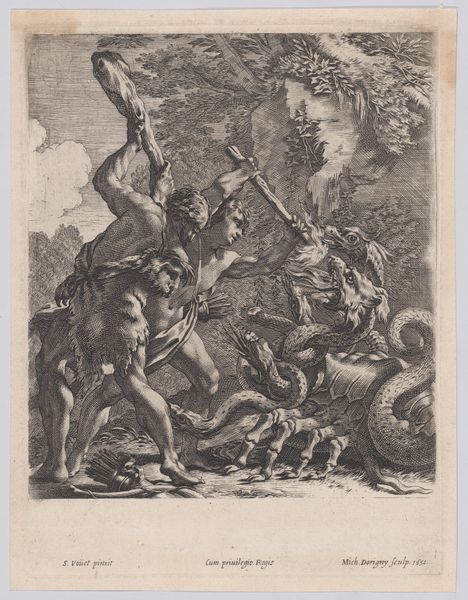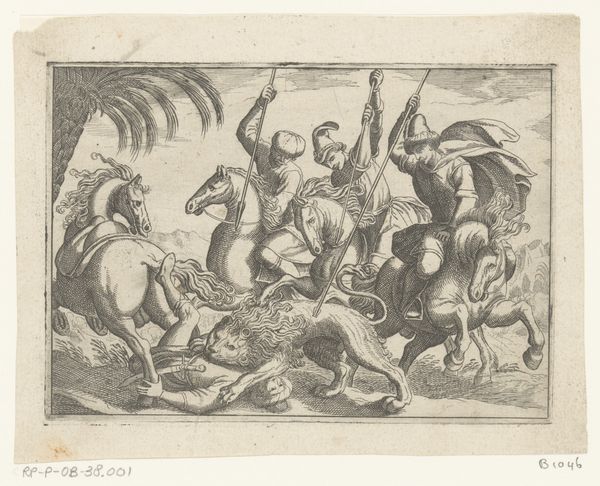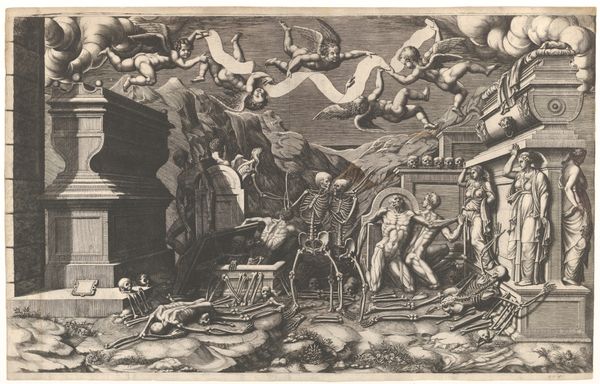
drawing, print, etching
#
drawing
#
narrative-art
# print
#
etching
#
figuration
Dimensions: 124 mm (height) x 151 mm (width) (plademaal)
Curator: This etching, titled "Heksene i 'Macbeth'," which translates to "The Witches in 'Macbeth'," was created by Oluf Hartmann in 1908. I'm immediately drawn to the artist's skillful use of line and shadow to evoke such a feeling of eerie anticipation. What are your first impressions? Editor: There's definitely a disquieting atmosphere. I see these huddled figures almost emerging from a dark miasma, evoking not just Shakespeare’s witches but broader historical persecutions of women deemed 'other.' The stark monochrome seems fitting. Curator: Indeed. The monochromatic palette intensifies the dramatic tension inherent in the scene. Hartmann's concentration on the expressive potential of light and shade and on line work, with its cross-hatching and delicate shading, are quite effective formally. The eye is drawn across the picture plane. Editor: But isn't that 'dramatic tension' linked to the witch trials? Doesn't this etching capture the enduring trope of the witch as a figure of both fear and, potentially, empowerment outside patriarchal structures? Their power derives from their exclusion. It's hard not to read this through a feminist lens. Curator: While I understand the value of your interpretation, might we not also focus on the structural elements at play here? Notice how the artist contrasts the defined form of the figures with the amorphous cloud swirling behind them. This pushes and pulls our attention across the composition. Editor: It is formally compelling, yes. However, I struggle to ignore the social context, particularly when the subject matter explicitly invites it. What about Hartmann’s own context? Was he intentionally commenting on the historical representation of women, or merely illustrating a scene from a play? Perhaps both are valid? Curator: Context is essential to art but I believe we must first examine the lines, composition, the tension between representation and abstraction. If you’d like my perspective. Editor: Agreed, these considerations do indeed create that sense of tension, which speaks volumes about how images, in themselves and the stories behind them, deeply affect our engagement with art history.
Comments
No comments
Be the first to comment and join the conversation on the ultimate creative platform.
